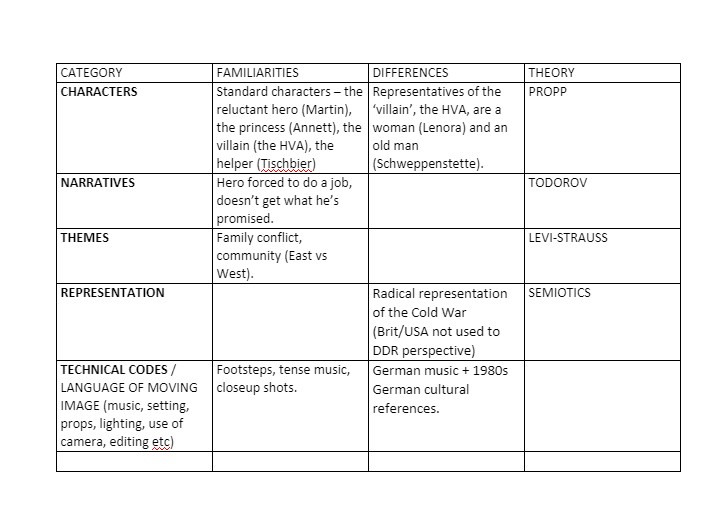The Killing (Forbrydelsen):
Transnational audience = these are people from all across the globe, who may not speak the same language, but consume and look at the same media content.
Transnational institution = these are international organizations that are usually not run by the government and they are known worldwide and their impact spreads worldwide
In what ways is ‘genre’ beneficial for transnational audiences?
- Forbrydelsen is a foreign film that is produced in Dutch and it attracts a transnational audience by following the rules and conventions that follow with a certain genre of programme.
- A narrative image is used in order to allow the transnational audience to understand the plot of the media source, even if it is in a foreign language and they do not understand what is happening.
- Forbrydelsen includes the generic regime of verisimilitude in order to create a piece of media to appear lifelike, which makes the audience want to watch the media as they feel they can relate to it if they watch it.
- The theory of preferred reading by Stuart Hall can also be applied to this media as if many people like it, the word would spread across and more people would want to watch it as their friend recommended it and then they might recommend it to a friend and so on.
- “The Killing” uses familiarity of a specific genre, such as in The Killing, a mystery genre is set by the use of a detective and the death of the victim. This familiarity attracts a transnational audience as even though they may not speak the language that the programme is spoken in, they can follow the narrative image and see familiarity of the programme with the same genre programme in their native language.
In what ways is ‘genre’ beneficial for transnational institutions?
- By creating the source of media for a transnational audience, the transnational institution can attract viewers from all across the globe, which means they have a higher viewing rating and can therefore make more money through translated versions and spin offs.
- For example, Forbrydelsen was so popular, an English version was produced by Fox Television Studios in collaboration with Netflix.
HOW DOES MEDIA ORGANISATIONS BUILD AND MAINTAIN AUDIENCES NATIONALLY AND GLOBALLY?
- The Killing” uses familiarity of a specific genre, such as in The Killing, a mystery genre is set by the use of a detective and the death of the victim. This familiarity attracts a transnational audience as even though they may not speak the language that the programme is spoken in, they can follow the narrative image and see familiarity of the programme with the same genre programme in their native language.
- They use a famous theme that anyone would be able to identify, even if it was in another language.
- The Killing was a collaboration with a German PSB (public service broadcasting) company and Dutch PSB company so that both the audiences from the Netherlands and Germany are attracted due to the producing company being from their region.
- Usually, high status broadcasting companies are used as if people have watched a programme from the same company and enjoyed it, then they will be willing to give another programme by the same PSB company a try as they might like the style or their ideas they present in the TV programmes.
- The PSBs that produced The Killing make it very realistic in order to entice the consumers to watch because they feel they can relate to it and there is a repertoire of the mystery genre in order to keep the sameness of the programme with the mystery genre.
- Keeping the sameness of the programme and following the conventions of what makes a mystery genre keeps the audiences attracted as they are familiar to the genre and will be able to understand if it was in a foreign language due to the conventions, narrative image and non verbal communication are familiar to a programme in the same genre that is in their native language.
- However, The Killing is different as it counteracts the expectations of programmes in the mystery genre, leading the consumer into suspended disbelief, which makes this programme differ from others, but still remain familiar to the audience
- It targets social class C1, C2 and DE (80% of the population), so uses that class of people in the programme to attract that audience.
- Serves as a need of escapism and enjoyment in the Maslow’s Pyramid of needs

